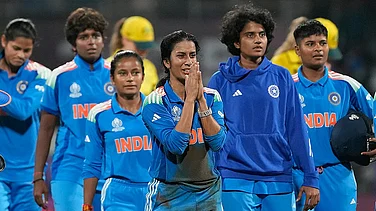In its latest verdict on the Bilkis Bano case, the Supreme Court on Tuesday quashed the order of the Gujarat High Court that let an early release of the rapists last year. Citing the incompetence of the Gujarat government, a bench of Justices B V Nagarathna and Ujjal Bhuyan today also acknowledged that the petition challenging the premature remission of the eleven convicts in the Bilkis Bano case was valid.
On May 13, 2022, a two-judge bench of Supreme Court referred to the Gujarat government to consider the remission application of a single convict as per the 1992 policy. On August 15, during Independence Day celebrations, the Gujarat government accepted the remission applications for all 11 convicts sentenced to life imprisonment.
Besides arguing that the remission was legal considering the guidelines prescribed by the Gujarat remission policy in force in 1992, the state government also cited the reformative theory of punishment to argue that even those convicted of heinous crimes deserved an opportunity to reform themselves and be reintegrated into society, on showing contrition and after serving their time.
In August, when an apex bench questioned the “selective remission” of the prisoners, an Additional Solicitor General appearing for the state contended that the law is not that everyone should be punished perpetually and chance should be given for reformation.
Around the same time, advocate Sonia Mathur, appearing for one of the convicts said, “We wish you would canvass reformative theory for all prisoners who have completed 14 years in India. How many remissions have taken place? Why are our jails overcrowded? They should be eligible for remission in the first place.”
The reformative theory of punishment takes an individualistic approach to every person who has committed a crime. By this theory, ‘offenders are not seen as inherently evil or irredeemable, but rather as individuals who can be reformed and reintegrated into society with appropriate interventions’.
What guides the philosophy of reformative theory of punishment?
The theory moves around the well-known philosophy of Mahatma Gandhi: “An eye for an eye will turn the whole world blind.”
Also known as the reformative theory of punishment, this philosophy of criminal justice emphasises the rehabilitation and reform of offenders as the primary purpose of punishment, rather than retribution or deterrence.
The theory forms an integral part of the criminal justice system whereby it establishes deeper connections to other areas of political philosophy and ethics. The practice involves transforming a wrongdoer into a ‘normal’ citizen by reintegrating faith and viewing the person’s character separately from the action he committed. By this method, the ‘criminal’ is also viewed as a patient who needs to be brought back to normalcy and harassing the offender is not the way rather individualism forms the central of the theory.
According to this concept, most crimes occur as a consequence of a dispute between the criminal’s character and intent. It should be noted that one may commit an offence either because the temptation of the intent is greater or because the restriction imposed by character is relatively weak. Punishment, according to reformative theory, is more restorative than a deterrent.
Participation in rehabilitation programs under the reformative theory of punishment is typically voluntary, and offenders are encouraged to actively engage in their own rehabilitation process. There are several community-based reformative programmes where inmates come together to undertake group, community services that help them to take responsibility towards society and re-socialise among each other.
This theory stands against corporal punishment and inmates are put in correctional homes. According to this theory, they should be released once they are fit to mix with other people without carrying the filter of a ‘criminal’.
What are similar examples across provisions of Indian laws
Several provisions under the Indian Penal Code, the Code of Criminal Procedure, and others provide the way for reformative punishment of theory.
Article 72 and Article 161 of the Constitution of India: Article 72 of the Indian Constitution, 1950 enables the President of India to pardon a wrongdoer. The Governor of the state also has the same authority under Article 161 of the Indian Constitution.
The Juvenile Justice (Care and Protection of Children) Act, 2015, which deals with the rehabilitation and reform of juvenile offenders, reflects the reformative theory of punishment.
Several sections under the CrPC enable the court to offer reformative and rehabilitative services to the offenders.
Section 4 of the Probation of Offenders Act, 1958 addresses the discharge of a wrongdoer because of his or her good behaviour. Section 4 of the Act does not apply if the offender is convicted of an offence punishable by death or life imprisonment.
Sections 54 and 55 of the Indian Penal Code, 1860 deal with the commutation of punishment, i.e., they have the power to reduce a judicial punishment to a lower level after assessment of the offender.
What are the arguments against the theory
When it comes to releasing convicts following the approach of the reformative punishment theory, critics argue that there are several loopholes to it such as the reformation of offenders is an injustice to the rights of the victims. In the case of the Bano case, such a theory on the convicts put the rights of the rapists above the right of a woman, who was gangraped during the 2002 Godhra riots while she was five-month pregnant.
Further, it raises several other questions about the inadequacy of the punishment for those, who have committed a heinous crime as such. The theory in this case can be perceived as being too lenient.
Critics also argue that the implementation of rehabilitation programs can be resource-intensive, requiring significant financial and personnel resources.
Above all, a lack of data on the overall implementation and success rate of reformation raises fear over future crime and wrongdoings by the same convicts


























